I have learned about oBravo brand long ago. Interesting, it has been actually one of the first brands I have encountered in my audiophile life and mainly the reaction for them was — really? Can it cost that much?
I, however, has been interested in a different thing. They have produced hybrid iems even before it has become mainstream. Even more, they have made it according non-traditional scheme “dynamic + tweeter”. 2 transducers with planar AMT transducer as tweeter. I like planars very much and even given I don’t like hybrids usually, I acknowledge that the ‘dynamic + tweeter’ combination has become very popular in full-fledged acoustic systems. Yes, I still love single-driver setups more or at least when one type of drivers plays one frequency range, but who cares? It’s realization. Modern technologies allow to fix many problems. Somebody is able to reveal full potential of single drivers, and someone is able to do this with several.
Accessories and packaging
I wouldn’t stop on this for a long time, but I still cannot miss it because the accessory range is real luxury.
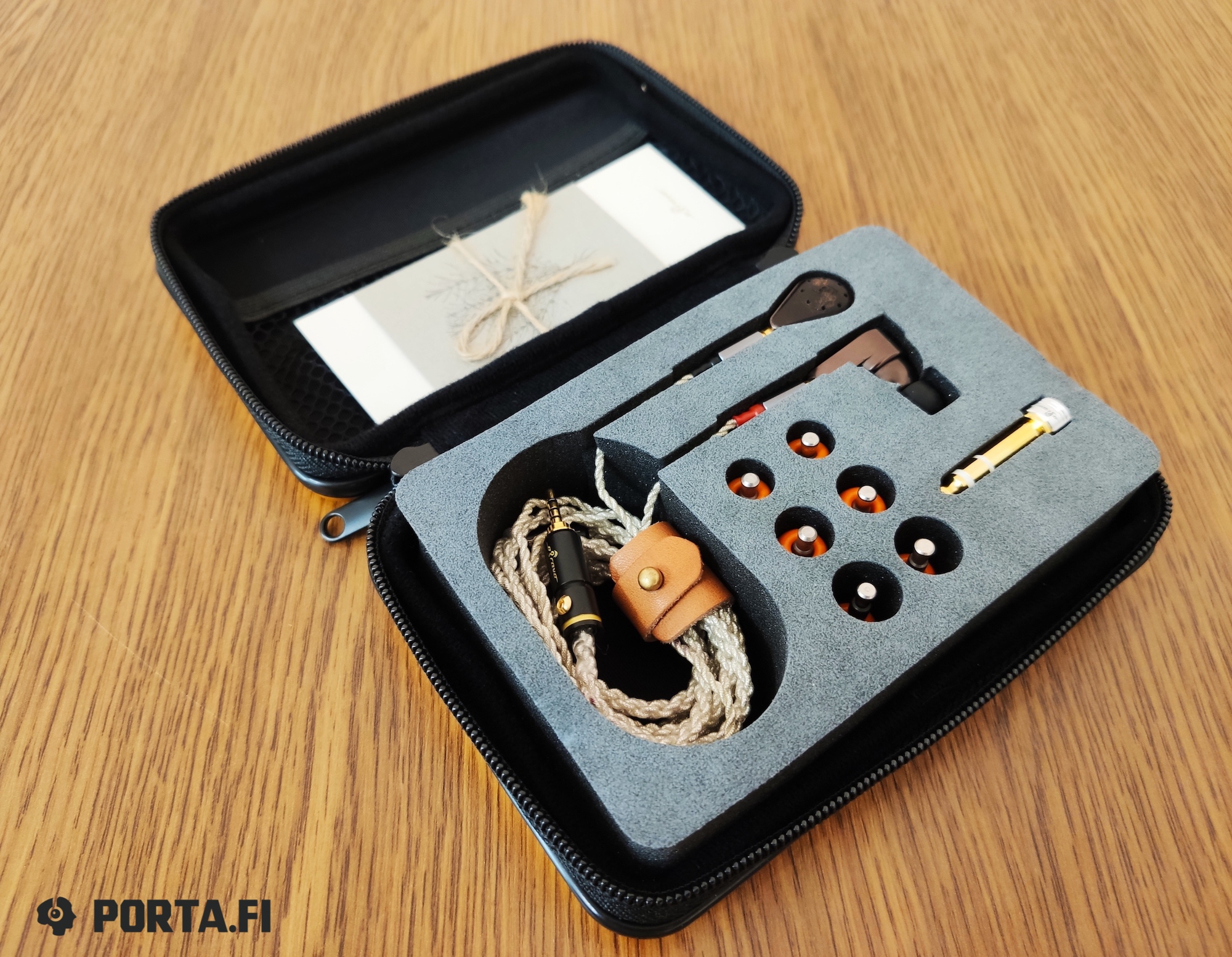
The outer box is made of white recycled cardboard with logo in upper left part. The box has a wide paper band on it with the name of model. Looks unusual and respectable.
Inside the case is filled by pleasant material with projections for adapter and earphones. Some paperwork is there too. Overall style is made to look natural. There are even 3 booklets tied together with a real knitting. Looks really great. There may be no IEMs in suited projections, but there is a part for blue foam Comply tips. The manufacturer recommends them as the best suit, it seems. Of course we could pity that there are no ‘sleeping bags’ for each headphone, but still there is a whole sleeping department there — and I speak about rather large hard metal zipped case. It is yellow and has company logo on it, rather large for portable use but it is clearly transportable and even reminds regular cases.
Inside there is the same peasant material and projections for IEMs, cable and tips. The latter are foam again, but of orange color.
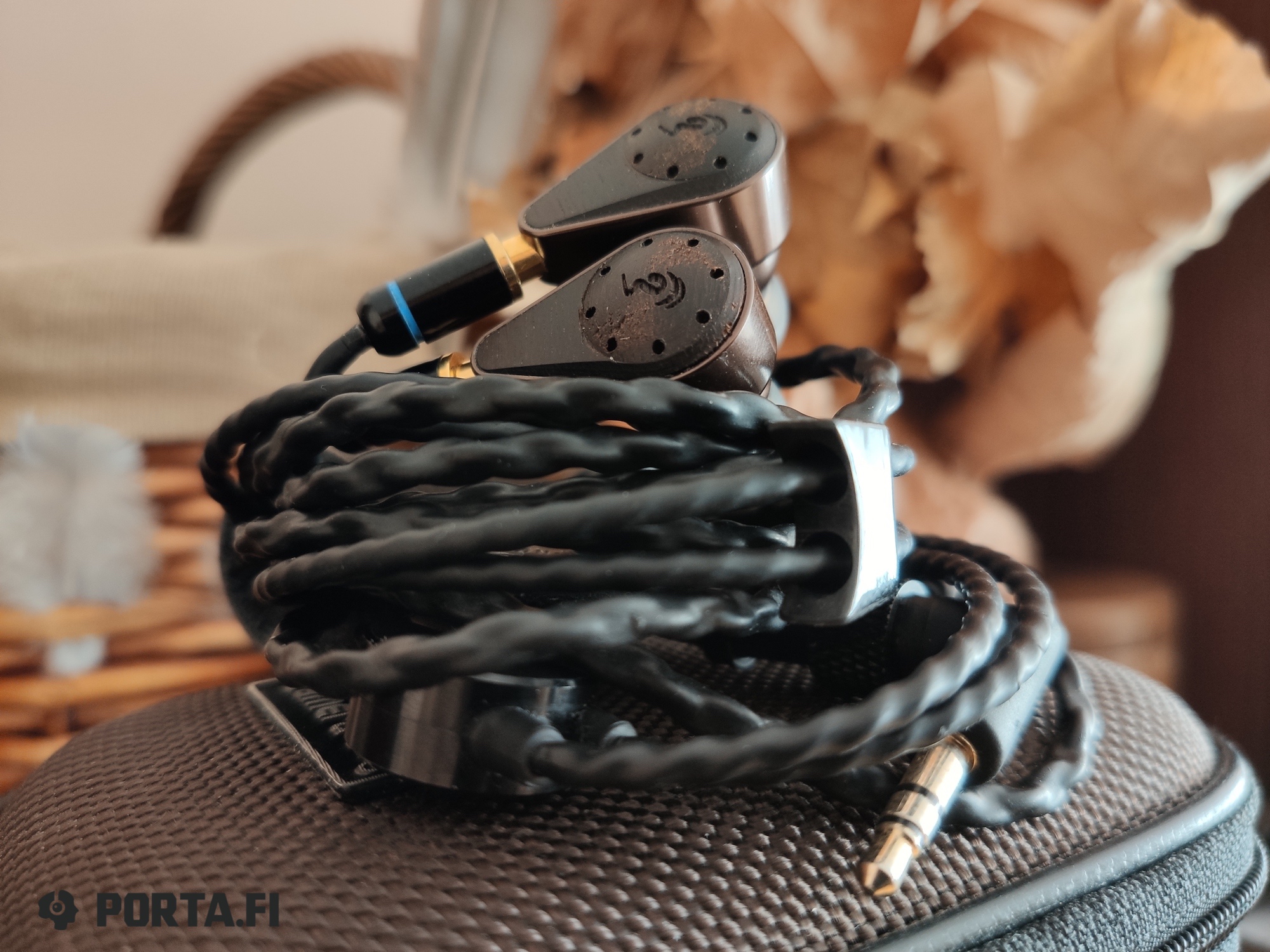
Stock cable is rather simple and stiff and has transparent coating that shows spiral braiding. Connectors are branded and not too large, long enough. Thickness is not of audiophile calibre. However, if we take a closer look, it looks really good and trendy, and of course it is not overly thin. If I remember correctly, the cable is silver-plated copper litz, but I couldn’t get any comments on this from manufacturer so I can be mistaken.
Connector is straight 2.5. If you wish to use another connector, there are 3.5 and 4.4mm adapters in accessories, as well as traditional 3.5 to 6.3mm, branded as well. They are all straight and this may be slightly dangerous for jacks if you are not careful. But again, it’s good to have them.
What is really not good (and it is not the absense of silicone tips), is that though the cable is not detachable, the MMCX connector is slightly different. Well, not slightly, but almost totally. Visually it projects from the body but has another dip to prevent rotating. I haven’t seen any 3rd party connectors of that kind on the market so I think that you may have hard time to find one. Socket is rather deep and cable connector just cannot reach it. This is. disappointing part, that however haven’t prevented me from workaround — I have removed that dip by using needle-file, but if you want to do it, do it on your own risk, I cannot recommend it. Of course, you will lose warranty as a result, so it’s up to you to decide if it is worth it.
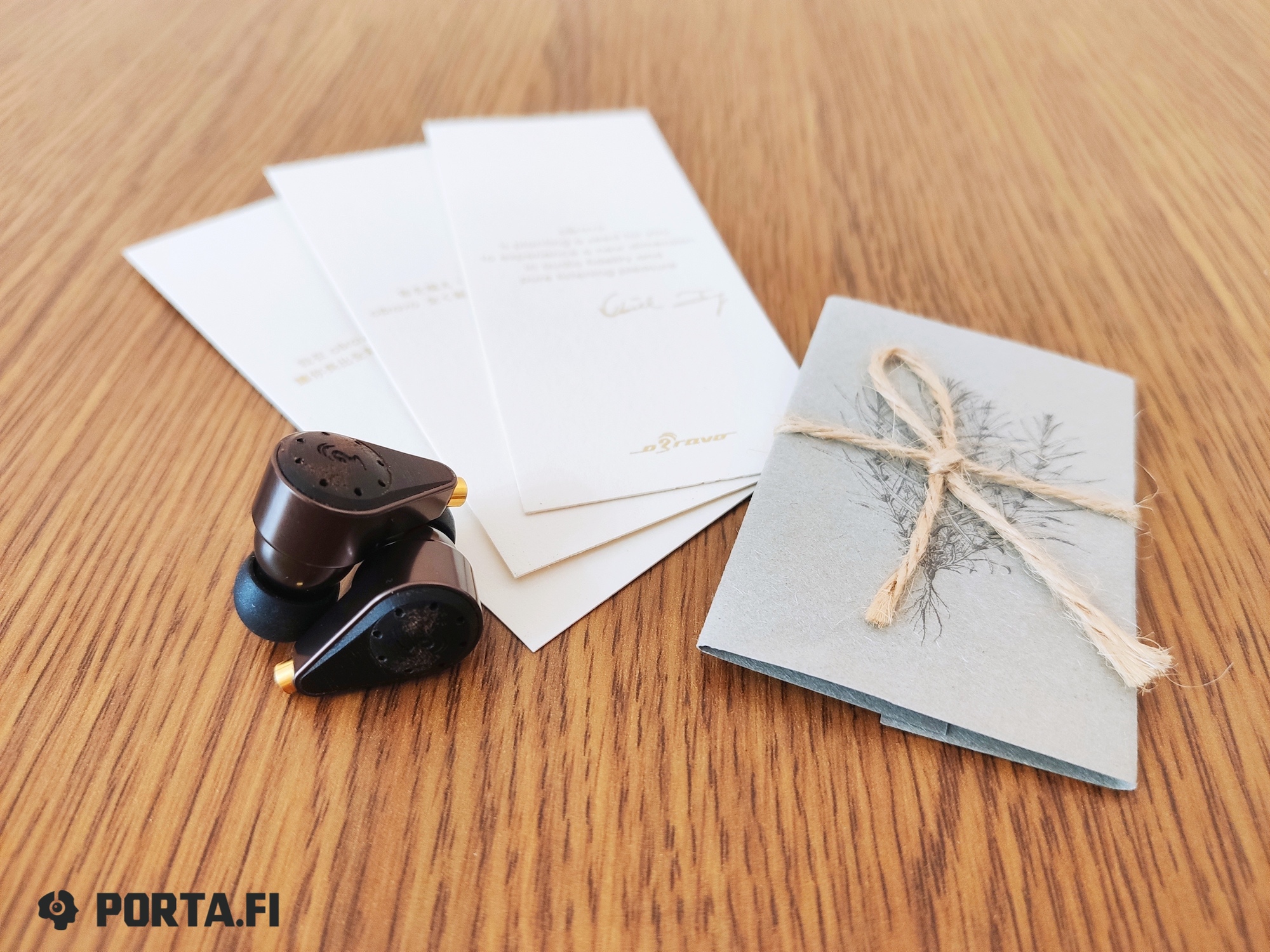
As for the cable rolling influence, I cannot name it too high. There is a partial difference by using some of the cables but it is individual. It’s closer to Dita Dream for example than to crossover models such as CA Andromeda and Solaris. So by cable rolling I have got slightly better control on lows and slightly better highs. The best pairings have been with Dita Audio the Truth the Replacement cable, Whiplash Audio TwAg Gold, Whiplash Audio TwAu, Toxic Cables Hydra 22. As for ALO Reference 8 and Linum SuperBax, as well as Effect Audio Artemis, there has been not much difference.
Apart from that I have purely aesthetic problem with them. As a perfectionist I can’t stand when cable connector is not directly next to the body of headphone. For me it looks non-professional, as if MMCX mod has been done. oBravo has slight projection between headphone and connector and for me it just doesn’t look good and ruins the style. Unattached headphone looks great. However it does not spoil the ergonomics, so it is just my 2 cents.
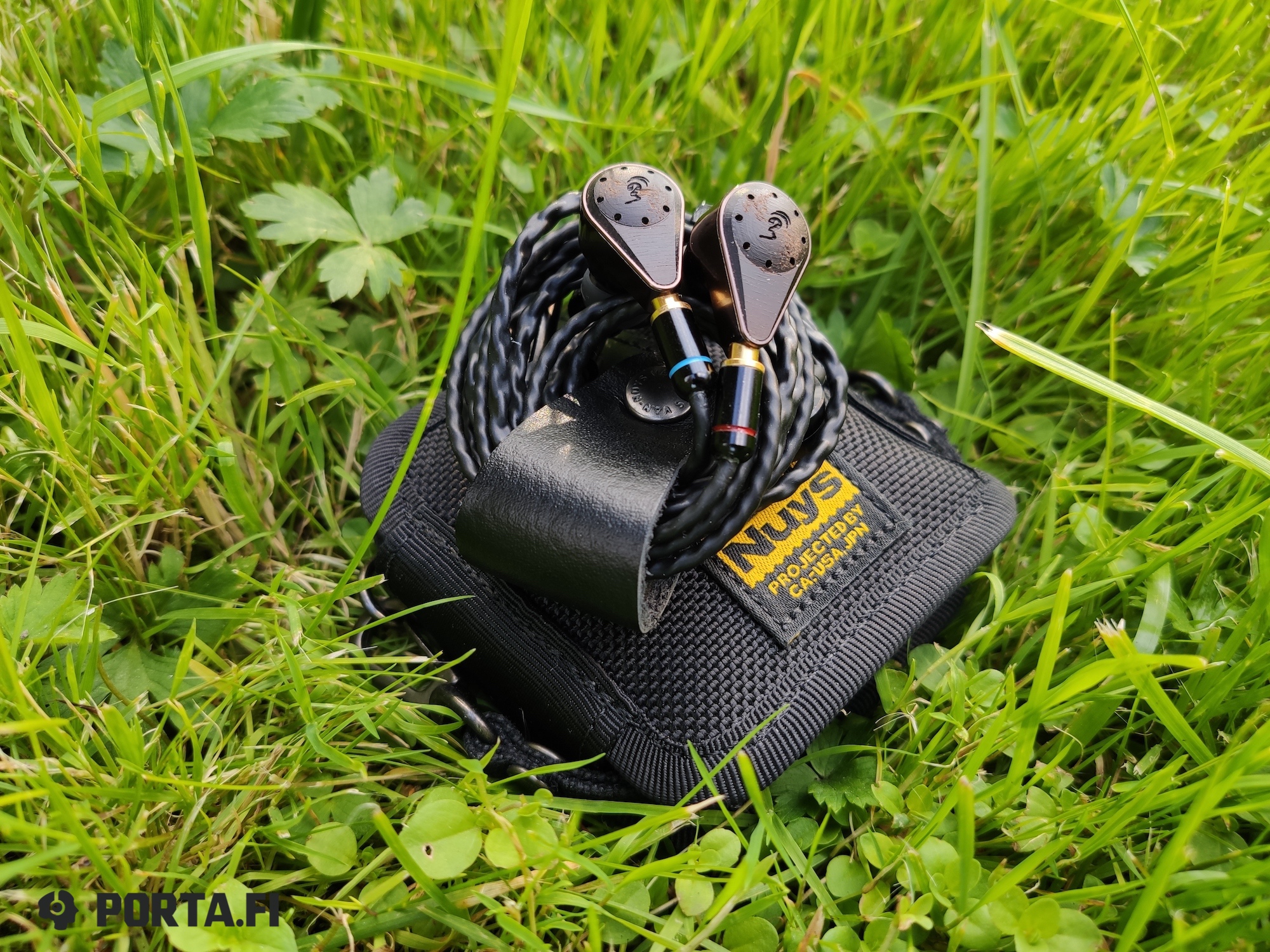
Design and comfort
The IEMs look rather strict and laconic. On the one hand, they are rather large and not very convenient, on the other — their style and design attract attention. Fluid shapes, geometric lines and laconic shape remind about classic cars. However, there are options with oBravo and you can choose different materials of nozzle and body. Manufacturer claims that this influences sound as well but I can’t confirm it since I don’t have another variant. So, there are uber-top ceramic version and wooden version, in addition to the cheapest, aluminum one. They all, however, have similar characteristics — 16 Ohm impedance, 102 dB sensitivity and frequency range from 15 Hz to 35 kHz. I haven’t found any info on which driver is responsible for each frequency range so it is not clear what the tweeter really plays. However, the IEMs are very coherent. Inside you get 8mm planar tweeter and 12mm dynamic transducer.
Front panel is made of rather dark wood and have good texture. Sometimes photos just can’t show how good they are in real life. There is a company logo in the center and slight projections on sides. It looks not striking, but rather stylish and beautiful. Other parts of the body are of the dark crimson color that is closer to brown. It is similar to Fidelity from Dita Audio, where it was called Barium Grey.
The nozzle is rather short, but wide and almost lacking projection for tips. The fit is not deep, rather regular. You should take some time to select correct tips. For example, Final Type e and Spinfits were no good for me, but Symbio Mandarines, Ortofon Tips and tips from Acoustune have been great, but not overly so, since Spiral Dots have been the best again. With them you can hear the full potential of the IEMs and they can change dramatically from ‘not bad’ to ‘wow’.
There are long connectors on cable and overall the construction is not suitable to be worn over ear. But due to the mod of connectors the length of socket is diminished and together with 3rd party cable makes over-ear wearing possible. It is more convenient and ergonomic. When wearing classically I have had to fix them in ear from time to time, while over ear style is much more comfortable.
The left-right channel markers are on the cable and are absent on IEMs, that is logical.
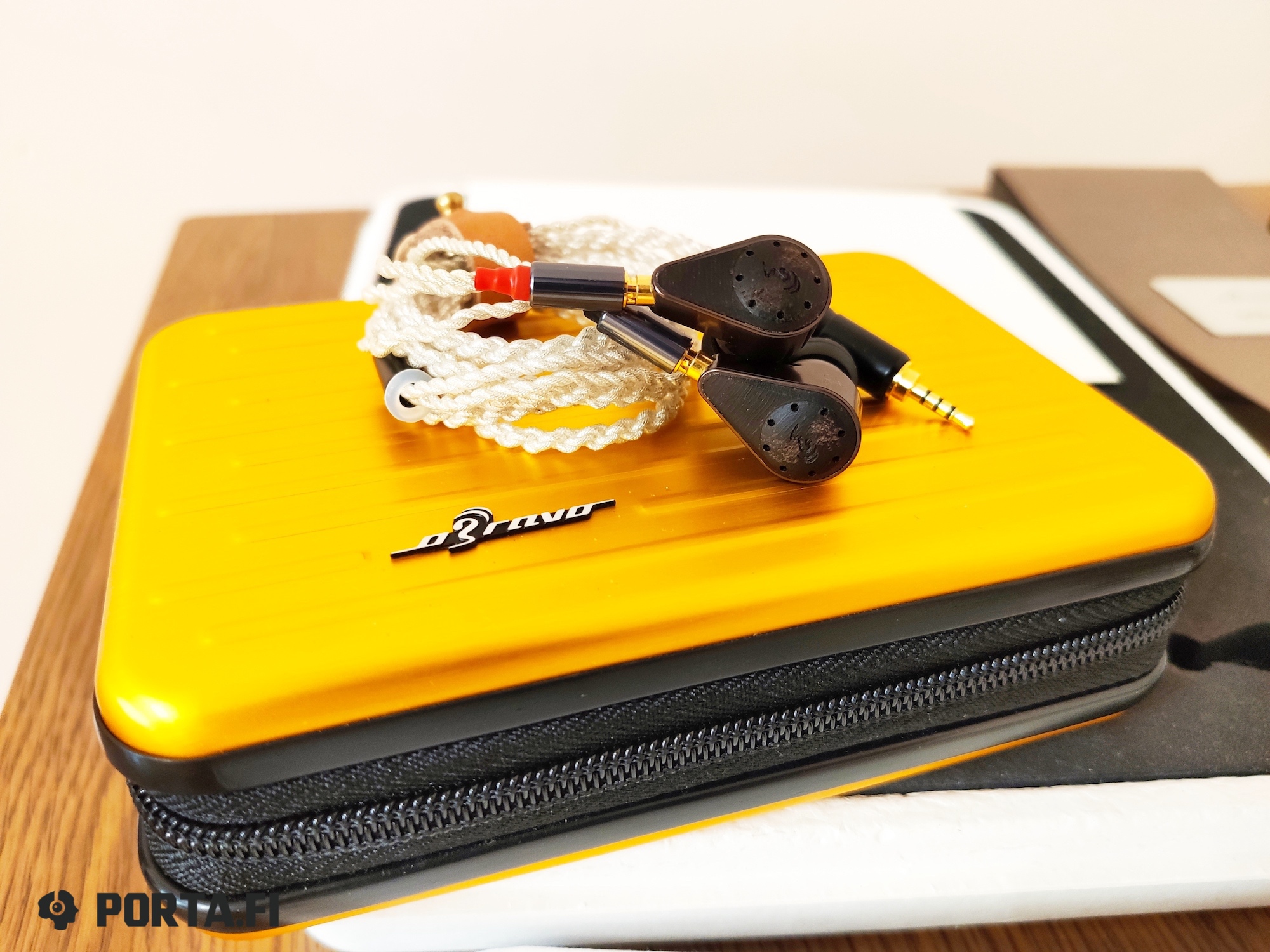
Sound
So, what do you pay that much money for and why do we have 2 drivers instead of one or 4 of different type as it is used to be nowadays? Well, because the IEMs are hybrid not for the sake of being hybrid and there is a whole bunch of sound in them.
Again, I should note that there you have to choose correct tips to hear the full potential — for me Spiral Dots work the best.
At first the sound has been light with laid back mids, and this is the first sign of badly chosen tips.
When chosen correctly the presentation is rather flat with good length on both ends, full body and great textures. They are very technically potent and reveal all recording nuances despite the frequency. Even more, the sound is very open, full of overtones and decays, with good instrument positioning and spcing.
As for presentation, they are close to Dta Dream and sometimes even remind CA Solaris SE with correct cable and tips.
Lows have good length. Their quantity is dependent on tips but you won’t have basshead presentation from them. Lows are not accentuated. They are coherent but due to good dynamic range and speed sounds technical. There are both massive slams and atmospheric parts and they are played realistic and convincing. The presentation may be both technical and massive depending on the recording. The details are not lost, the control is flawless and they show good character and shape. Bass is variable, has good texture and correct weight. It provides distinctive and natural lows.
Mids sound whole and musical. They have good weight and fullness. Slight warmness allows to keep them musical and natural. They are also technical, it is a pleasure to listen to timbre-rich instruments, for example, wooden or strings. The recording becomes neat and full of decays and reverberations. This part of range is not overly accentuated and the IEMs are very precise with vocals, so it is not too distant and not to close. Both vocal and instruments have good readability, distinctiveness and naturalness despite of genres. It is a great pleasure to listen to heavy genres as well as minimalistic styles with vocals and couple of instruments.
Highs have great length. They are full of details, technical and natural. No sign of unnaturalness or abundant coloration. They sound whole.
Attacks are played well, they are quick and shapy, sounding very distinctive. Decays make recordings to sound very lively, getting rich overtones. Their quantity doesn’t make the recording too slow, but rather brings it neatness and naturalness. This all you can expect from top IEMs.

Soundstage is another plus. It fully depends on recording with depth and width above average where necessary. It is not overly emphasized. The separation is good and correct and due to great dynamic range all instruments are in their positions in terms of depth and width.
Distinctive shapes do not prevent layers from good communication with each other.
Comparisons
I don’t have too many IEMs, so the first for comparison is Dita Dream, the second — CA Solaris SE. I won’t go too deep into details so the comparison will be short. Both models have great speed and technical ability, but if Dream is plain reference, Solaris are fun. Using cable and tips I have removed accent on lows mostly and considering this I would put erib-1a right between them. In fact, it is their competitor, being fast, shapy and attentive to details of the recording.
To some extent it combines strengths of both models. For example the soundstage is similar to CA Solaris SE — very wide, and you at first won’t believe it is possible with IEMs.
The sound has more weight, just like CA, but separation is not so emphasized and overall sound is slightly more coherent and natural.

Naturalness, attacks and decays are what makes erib-1a and Dream similar. They play as fast, technical and detailed. Dream however is more dry, while Solaris SE are slightly more fun and emotional.
So, erib-1a is more than good and their price suits their sound. Despite such flaws as unusual connector socket, I think oBravo will have their lovers. For me, they are in my collection beside Dream and Solaris SE.

